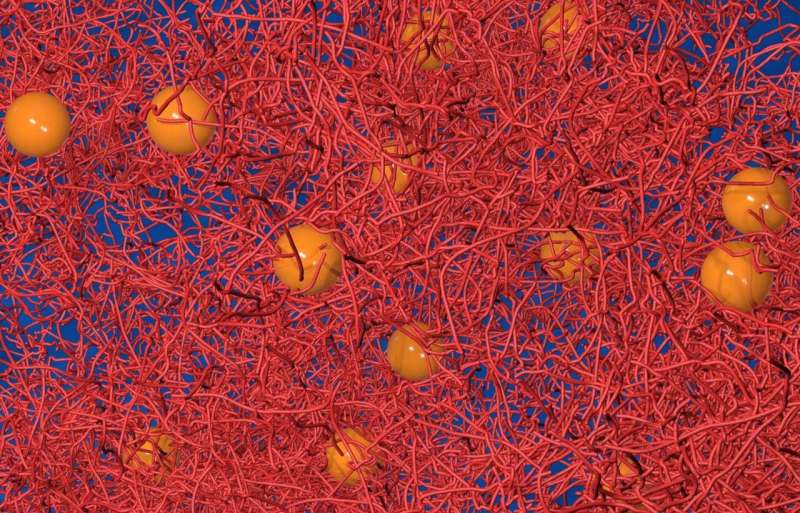Multitalented filaments in living cells

The cells that make up our bodies are constantly exposed to a wide variety of mechanical stresses. For example, the heart and lungs have to withstand lifelong expansion and contraction, our skin has to be as resistant to tearing as possible whilst retaining its elasticity, and immune cells are very squashy so that they can move through the body. Special protein structures, known as "intermediate filaments", play an important role in these characteristics. Researchers at Göttingen University have now succeeded for the first time in precisely measuring which physical effects determine the properties of the individual filaments, and which specific features only occur through the interaction of many filaments in networks. The results were published in PNAS.
One of the most important systems that cells use to ensure their stability, elasticity and resistance to mechanical stress is the cytoskeleton: an intricate network of proteins and filaments, predominantly formed by three types of thread-like protein structures, each of which has different functions and properties. The intermediate filaments belong to this group of protein structures. These filaments form networks that can be subjected to a tremendous force without being damaged: they are the shock absorbers of the cells. At the same time, these intermediate filaments can serve as an inner tether in the case of powerful deformation and this can prevent the cell from being torn apart.
To investigate these properties, the Göttingen team created artificial networks of intermediate filaments in the laboratory and used the movement of small embedded spheres to study how the entire network behaves. In fact, there are overlapping effects in the networks: the stretching behavior of the individual filaments; and the force and frequency with which the filaments interact at points where they cross (intersections). For this reason, the researchers investigated these aspects separately by first stretching individual filaments to determine the forces required for the stretching. They then brought two of the filaments into contact with each other in a criss-cross pattern and pulled on the point of intersection by moving one of the filaments. By arranging the filaments as if they were a 'microscopic violin', they were able to determine the exact strength and frequency with which the filaments bind together. They were also able to replicate these results with computer simulations. In addition, the team observed that the networks transform over an unexpectedly long period of time and slowly 'age' over the course of a week, because the filaments become longer and longer or join together to form bundles.
"All these observations increase our understanding of how our cells manage to be so incredibly robust and yet flexible," explains first author Anna Schepers from the Institute for X-ray Physics at Göttingen University. "In addition, a clearer picture of intermediate filaments helps us to understand how and why the mechanical properties of cells change, for example, during wound healing or in metastasising cancer cells," adds the research lead, Professor Sarah Köster.
More information: Anna V. Schepers et al, Multiscale mechanics and temporal evolution of vimentin intermediate filament networks, Proceedings of the National Academy of Sciences (2021). DOI: 10.1073/pnas.2102026118
Journal information: Proceedings of the National Academy of Sciences
Provided by University of Göttingen




















